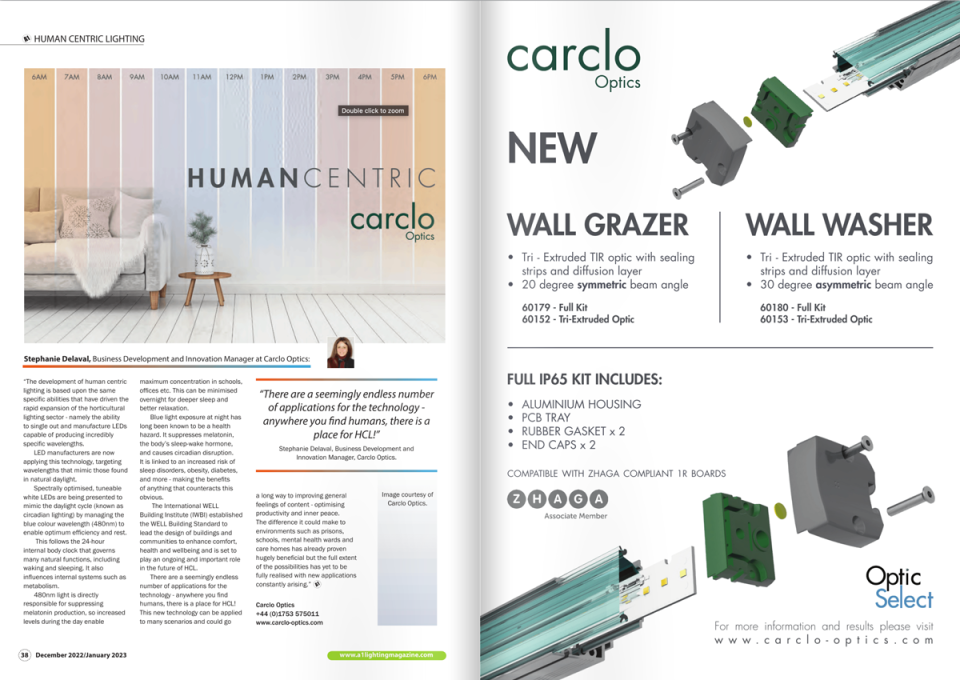
Carclo Optics co authored an article in this month's A1 Lighting magazine with the renowned Garden Lighting designer Neil Parslow. Read our contribution below or read the full article here.
BERNIE DANIELS & NEIL PARSLOW EXPLAIN THE KEY CONSIDERATIONS WHEN LIGHTING A GARDEN SPACE?
Garden or landscape lighting can completely transform an outdoor space when appropriately designed. All too often, garden lighting is way too bright even when lower wattage LED lamps have been chosen. In certain applications, even a 1W light source can be too much!
LED’s as we all know, are extremely cost-effective - especially in comparison with the old 50W halogen lamps. Well-managed switching can reduce costs further still and should be designed into the overall scheme from the outset. For example, in a typical residential garden setting, it will rarely be the case that the lights left on from dusk until dawn will be required.
Lighting setups can be controlled by a variety of devices such as a simple photocell time clock set-up, a smart device, or an interior home integrated lighting system.
When selecting light fittings, consider purchasing products with a modular construction (especially the light source), as this will enable future upgrade or component replacement. The outdoor environment is very unforgiving, and having replaceable components is better for the environment and the circular economy.
It is also advisable that extra low volt (ELV) be used rather than 230V mains voltage. This will eliminate potential nuisance tripping of electrical circuits, should any moisture find its way into any of the light fittings, enclosures or connections.
ELV typically comes in 12V, 24V constant voltage or constant current supply which is usually applied in gardens below 48V and is supplied by the LED drivers.
Another important consideration when choosing the lighting for outdoor settings, is the IP rating or ingress protection. For example, products designed for submersion, such as pool lights, would require IP68.
Glare control and viewing angles must be considered for all light fittings whether they are wall mount sconce fittings or ground-based spike uplights. The light source needs to be hidden from view, with only the effect of the light being visible on the surrounding landscape elements.
Secondary lenses or ‘LED optics’ can be utilised to refine both beam angle and glare. Companies such as Carclo Optics offer a wide range of products optimised to achieve enhanced control over these aspects. For example, the standard range offers 33 different 20mm optics ranging from 10º to 60º TIRs and 120º to 180º bubble optics, all of which work with the market-leading LEDs. The materials used are durable and stabilised and can be used in suitable outdoor fixtures with confidence.
Coloured lighting can play a role in garden lighting but is best used sparingly. It can have the unintended consequence of making plant foliage look artificial. 3000ºK light sources should be the maximum used in effective garden lighting schemes, as higher colour temperatures can start to have a negative effect on the surrounding wildlife, especially insects and migrating birds.
A professional garden lighting designer will know all of the relevant standards and specifications required to select the right fixtures for any project and consultation will not only result in a beautiful environment - it will also provide the customer with a safe and energy-efficient outdoor space to enjoy for a long time to come.
